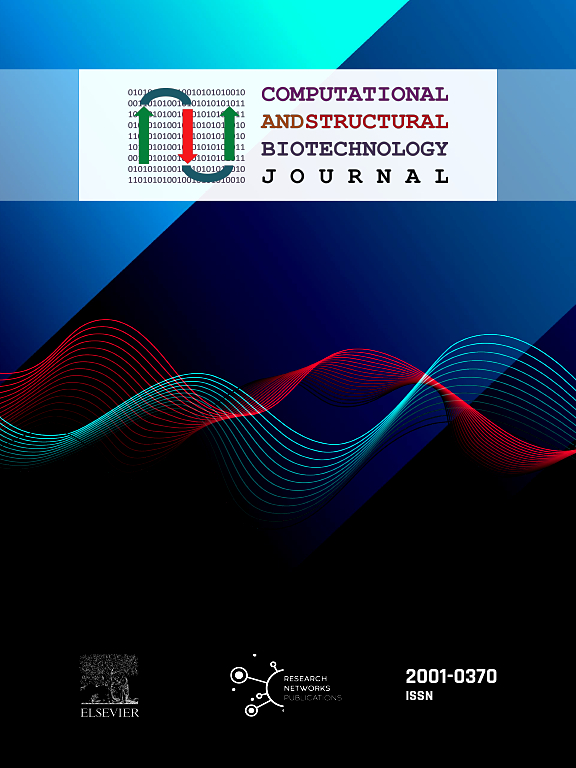SUMO-LMNet: Lossless mapping network for predicting SUMOylation sites in SUMO1 and SUMO2 using high-dimensional features
IF 4.4
2区 生物学
Q2 BIOCHEMISTRY & MOLECULAR BIOLOGY
Computational and structural biotechnology journal
Pub Date : 2025-01-01
DOI:10.1016/j.csbj.2025.03.005
引用次数: 0
Abstract
Accurate SUMOylation site prediction is crucial for deciphering gene regulation and disease mechanisms. However, distinguishing SUMO1 and SUMO2 modifications remains a major challenge due to their structural similarities. Conventional prediction models often struggle to differentiate between these paralogues, limiting their applicability in biological research. To address this, we introduce SUMO-LMNet, a deep learning-based framework for the precise prediction of SUMO1 and SUMO2 sites. Unlike previous models, SUMO-LMNet integrates a lossless mapping strategy and deep learning architectures to enhance both prediction accuracy and interpretability. Our model extracts high-dimensional features from sequences and transforms them into two-dimensional feature maps, enabling convolutional neural networks (CNNs) to effectively capture both local and global dependencies within the data. By leveraging a Lossless Mapping Network (LM-Net), this approach preserves the original feature space, ensuring that feature integrity is retained without loss of spatial information. While Grad-CAM highlights key features in individual predictions, it lacks consistency across samples and does not provide a dataset-wide evaluation of feature importance. To address this, we introduce Combined Heatmap Feature Analysis (CHFA), which systematically aggregates feature importance across multiple samples, providing a more reliable and interpretable dataset-wide assessment. Experimental results reveal distinct feature dependencies between SUMO1 and SUMO2, underscoring the necessity of paralogue-specific predictive models. Through a systematic comparison of multiple neural network architectures, we demonstrate that our model achieves over 80 % accuracy in distinguishing SUMO1 and SUMO2 modification sites. By prioritizing candidate sites for further study, our model aids experimental design and accelerates the discovery of biologically relevant SUMOylation targets. SUMO-LMNet is publicly available at https://predictor.isu.edu.tw/sumo-lmnet.
求助全文
约1分钟内获得全文
求助全文
来源期刊

Computational and structural biotechnology journal
Biochemistry, Genetics and Molecular Biology-Biophysics
CiteScore
9.30
自引率
3.30%
发文量
540
审稿时长
6 weeks
期刊介绍:
Computational and Structural Biotechnology Journal (CSBJ) is an online gold open access journal publishing research articles and reviews after full peer review. All articles are published, without barriers to access, immediately upon acceptance. The journal places a strong emphasis on functional and mechanistic understanding of how molecular components in a biological process work together through the application of computational methods. Structural data may provide such insights, but they are not a pre-requisite for publication in the journal. Specific areas of interest include, but are not limited to:
Structure and function of proteins, nucleic acids and other macromolecules
Structure and function of multi-component complexes
Protein folding, processing and degradation
Enzymology
Computational and structural studies of plant systems
Microbial Informatics
Genomics
Proteomics
Metabolomics
Algorithms and Hypothesis in Bioinformatics
Mathematical and Theoretical Biology
Computational Chemistry and Drug Discovery
Microscopy and Molecular Imaging
Nanotechnology
Systems and Synthetic Biology
 求助内容:
求助内容: 应助结果提醒方式:
应助结果提醒方式:


